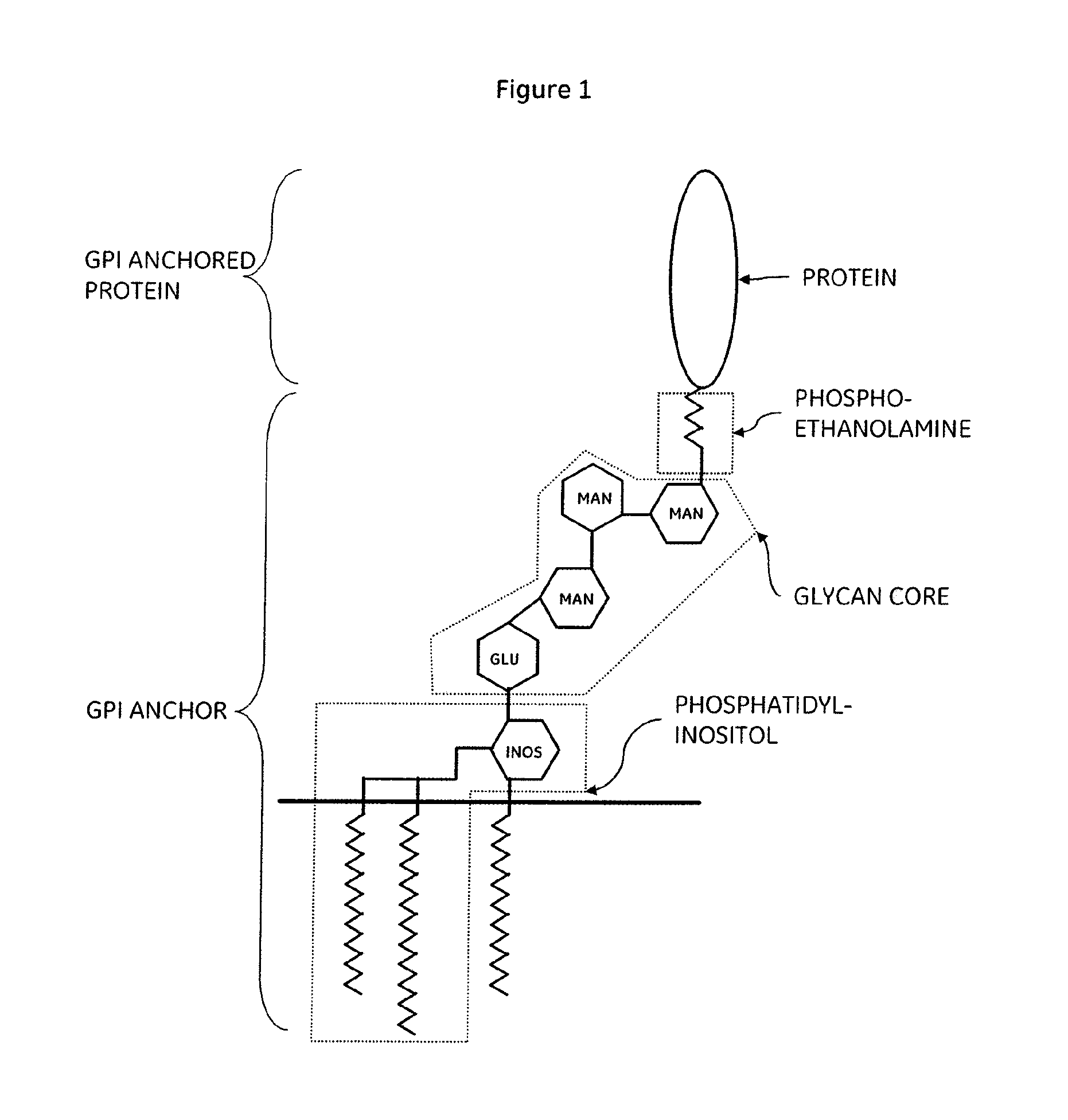Methods of detecting DNA damage
a technology of dna damage and detection method, applied in the field of detecting agents, can solve the problems of only occurring lasting dna damage, less than 10% cell survival, and known toxicity of an agent,
- Summary
- Abstract
- Description
- Claims
- Application Information
AI Technical Summary
Benefits of technology
Problems solved by technology
Method used
Image
Examples
examples
[0170]The invention is illustrated by reference to the following examples. For purposes of illustration the monitoring and quantification for the presence of the well-characterized GPI-anchored proteins CD55 and CD59 will be described. However, while preferred illustrative embodiments of the present invention are described, one skilled in the art will appreciate that the present invention can be practised by other than the described embodiments, which are presented for purposes of illustration only and not by way of limitation.
Examples of Cell Types
[0171]The human mono-cytic leukaemia cell line THP-1 expresses many “cluster of differentiation molecules” including CD55 and CD59 (Yokochi, S., et al., 2001, J.
[0172]Interferon Cytokine Res., 21, 389-398). Therefore treatment with genotoxic compounds and the subsequent monitoring for the presence of the GPI-linked proteins CD55 and CD59 will facilitate the assessment and measuring of mutation rates at the PigA gene locus. THP-1 cells are...
PUM
| Property | Measurement | Unit |
|---|---|---|
| pH | aaaaa | aaaaa |
| pH | aaaaa | aaaaa |
| pH | aaaaa | aaaaa |
Abstract
Description
Claims
Application Information
 Login to View More
Login to View More - R&D
- Intellectual Property
- Life Sciences
- Materials
- Tech Scout
- Unparalleled Data Quality
- Higher Quality Content
- 60% Fewer Hallucinations
Browse by: Latest US Patents, China's latest patents, Technical Efficacy Thesaurus, Application Domain, Technology Topic, Popular Technical Reports.
© 2025 PatSnap. All rights reserved.Legal|Privacy policy|Modern Slavery Act Transparency Statement|Sitemap|About US| Contact US: help@patsnap.com

